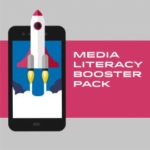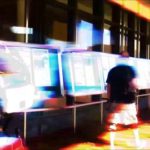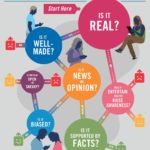This deliberation will have students view short video clips and news articles to analyze the effect of fake news on traditional media outlets, the reasons and incentives for purveyors of “fake news,” and provide students with resources to strengthen their media literacy skills. Students will use this information to develop strategies to identify “fake news” and improve their news literacy.
Media Literacy: Making Sense of the 24/7 News Cycle
A free press is essential to the success of a democracy. As the media has evolved over time to include radio, television, internet and now smart phones and social media apps, the ability in “being capable to read them” needs examining. This lesson guides students through analysis of social media posts, the definition of terms relevant to the media, and provides tools for identifying quality sources for examination of current political issues. This lesson accompanies the Talking Turkey: Taking the ‘Dis’ Out of Civil Discourse program as well as YLI and American Evolution’s First Freedom Wall. Free registration is required to access the lesson plan.
Media Literacy Booster Pack
Bell Ringer: Social Media and Democracy
Students learn about the effects of social media on society including the impact on civic engagement and social disintegration.
Fact Finder: Your Foolproof Guide to Media Literacy
Are your students savvy searchers? Can they spot the difference between a straight news article and an opinion piece? Do they recognize bias in their sources … or in themselves?
Tackle these challenges and more using Fact Finder’s 11 flexible, multimedia lesson plans. Eight skill-building lesson plans introduce essential media literacy concepts through engaging explainer videos and colorful infographics that help students revisit, retain and apply the key concepts. The accompanying News or Noise? Media Map provides a collection of examples ready for students to analyze and evaluate with the support of worksheets and discussion prompts. Three reporting lesson plans help students take what they’ve learned and apply it to their own content creation, inspired by the issues that matter to them.
The Media and Partisanship
Believe It or Not? Putting the Consumer’s Questions to Work
This unit introduces students to the purpose and practice of media literacy. It includes pre- and post-visit activities designed to bracket the Believe It or Not? ED Class ( The activities also can be done independent of a visit to the Newseum.) Students will come to understand why not all information is trustworthy and how to differentiate the good from the bad. They practice using a set of tools – the consumer’s questions – to deconstruct and evaluate information sources.



